E. & H.T. Anthony & Co.
Long Focus Clifton View Camera
Anthony & Scovill Catalog 1903, p. 59
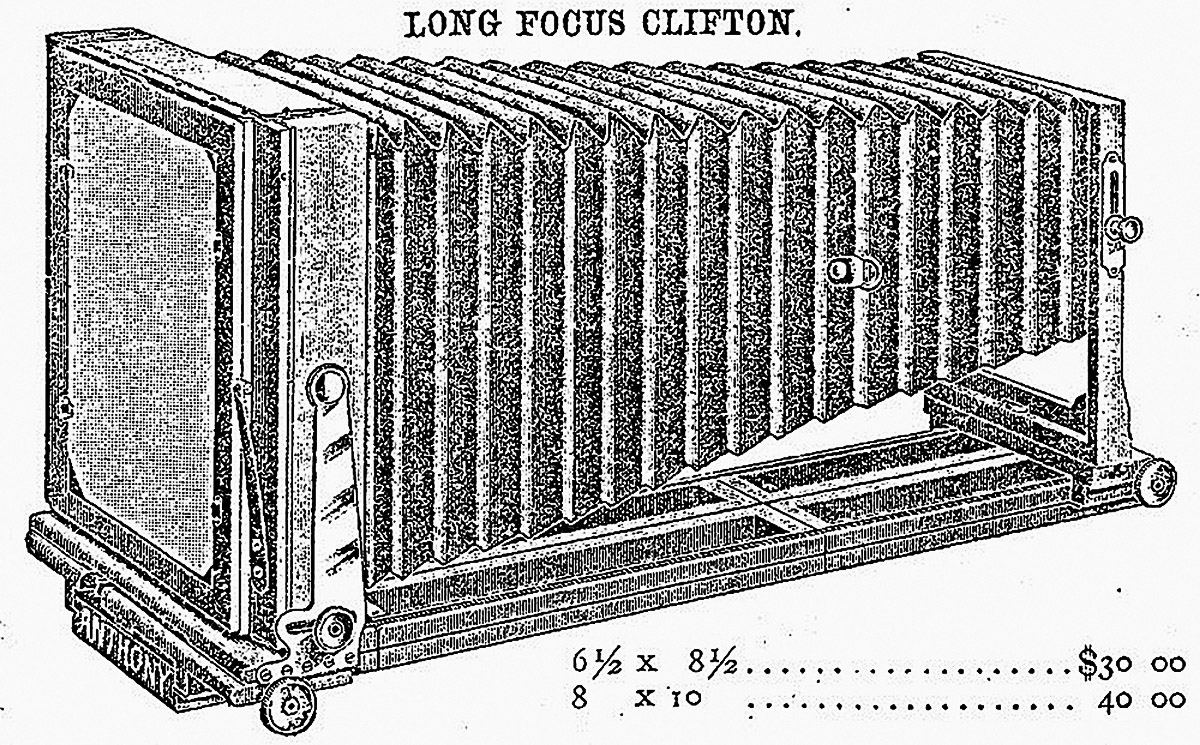
6½ x
8½" - original bellows having a
maroon leather exterior.
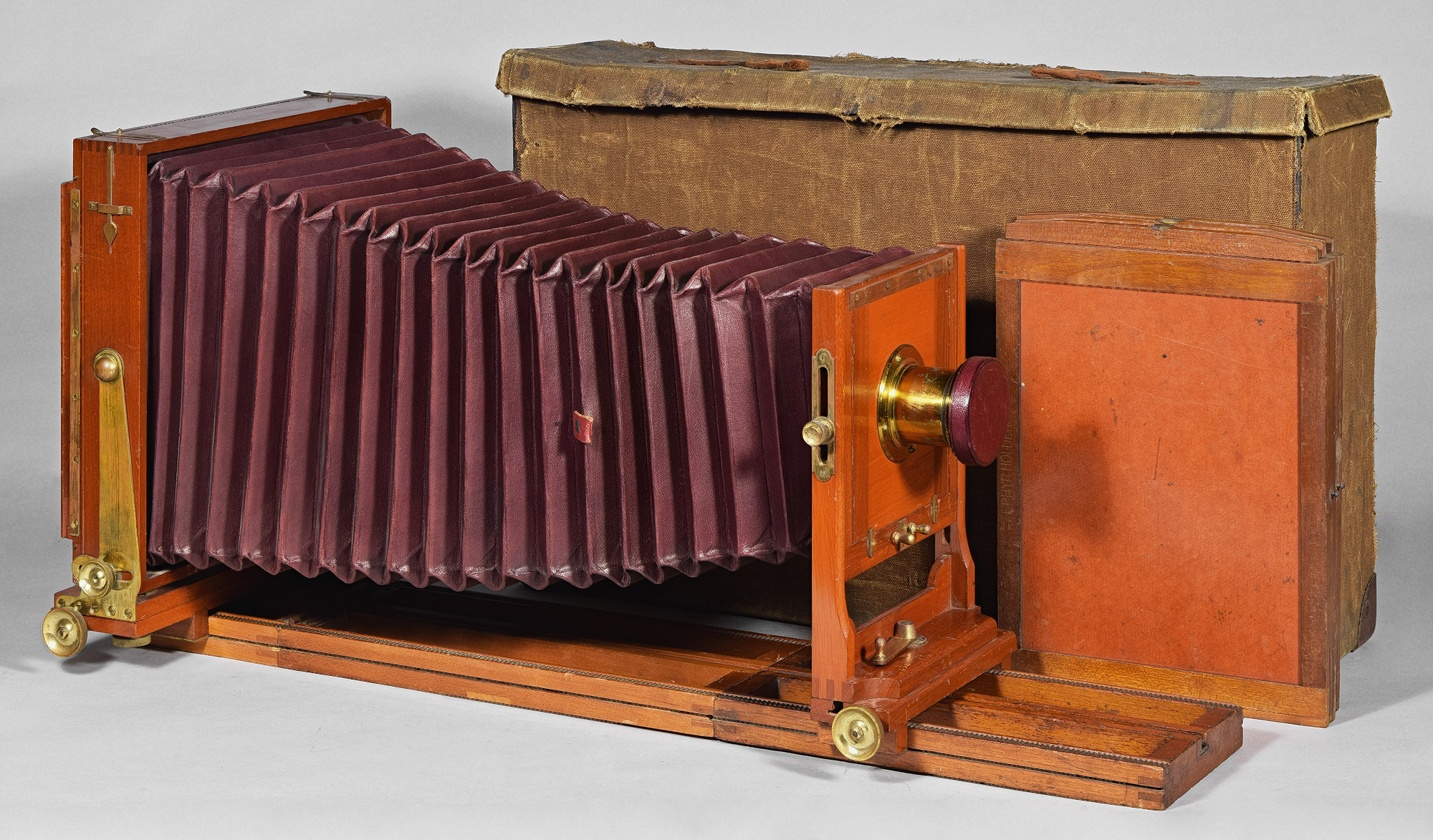
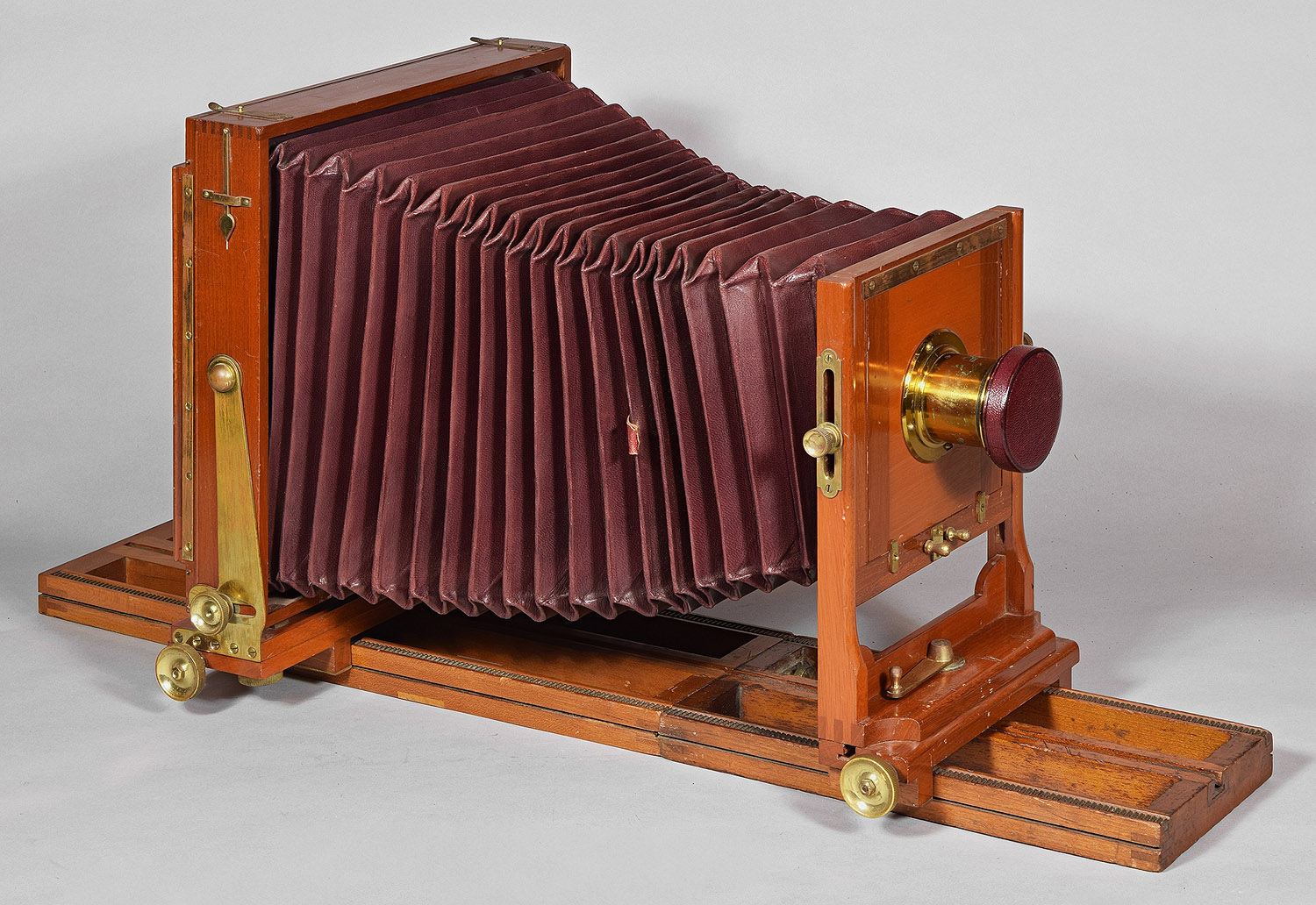
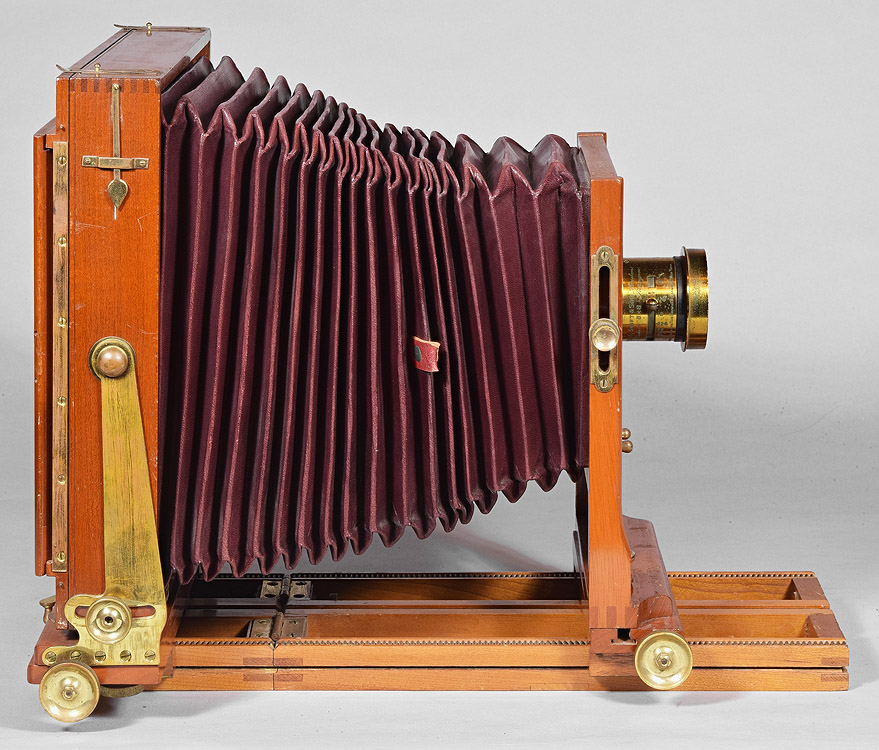
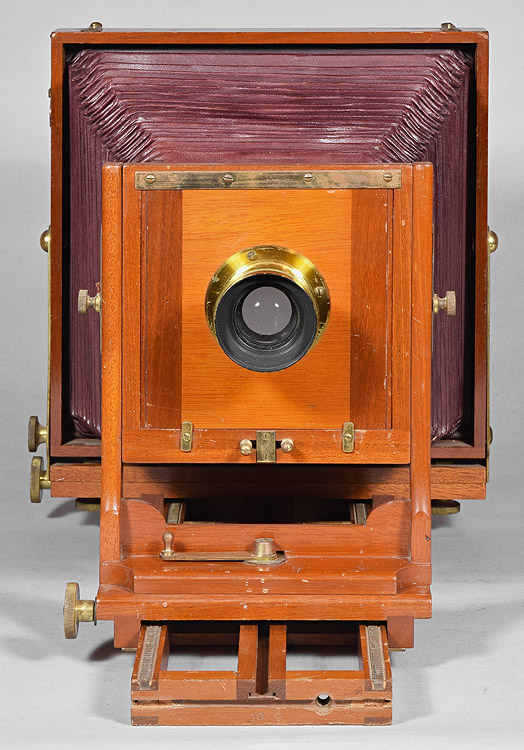
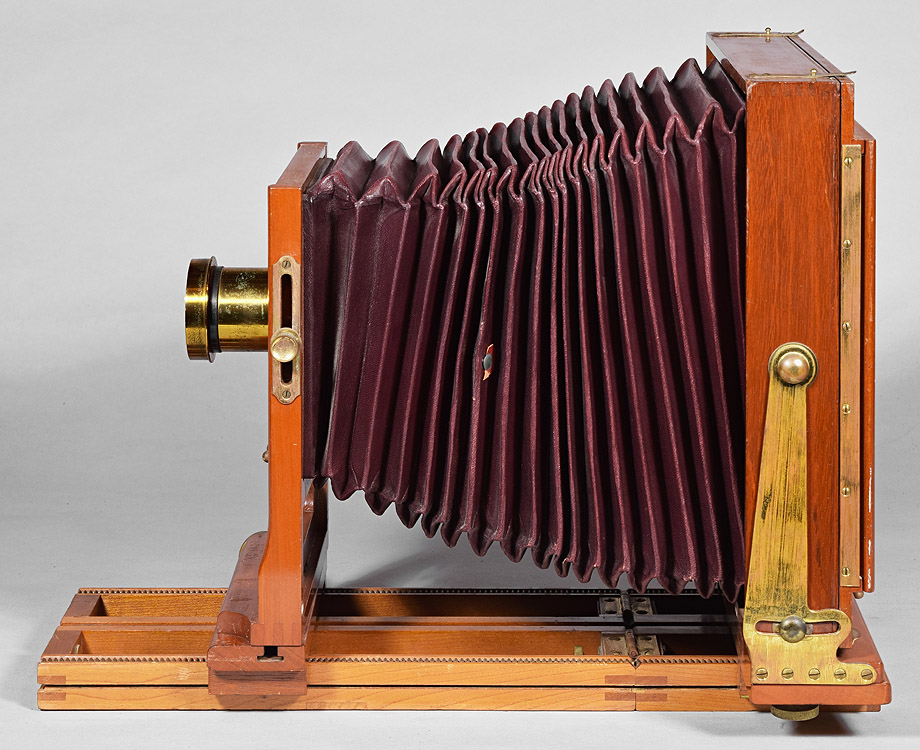
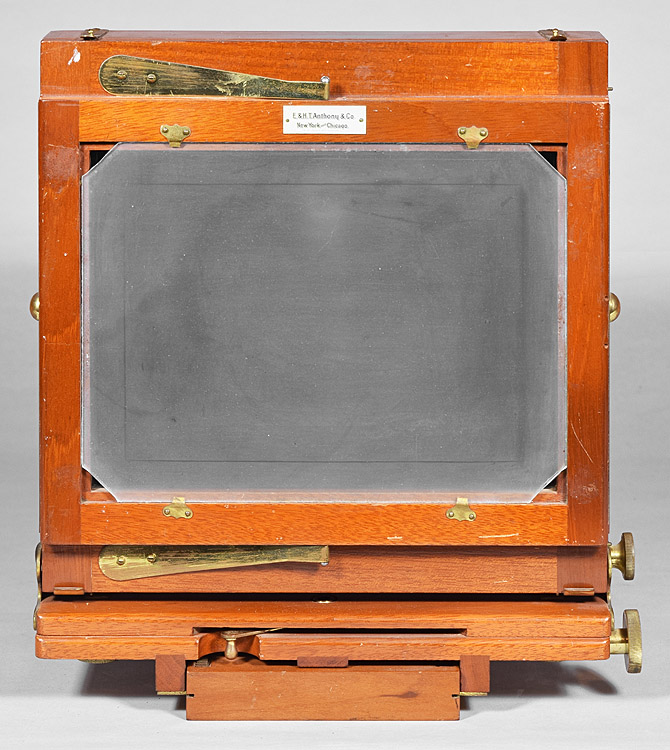


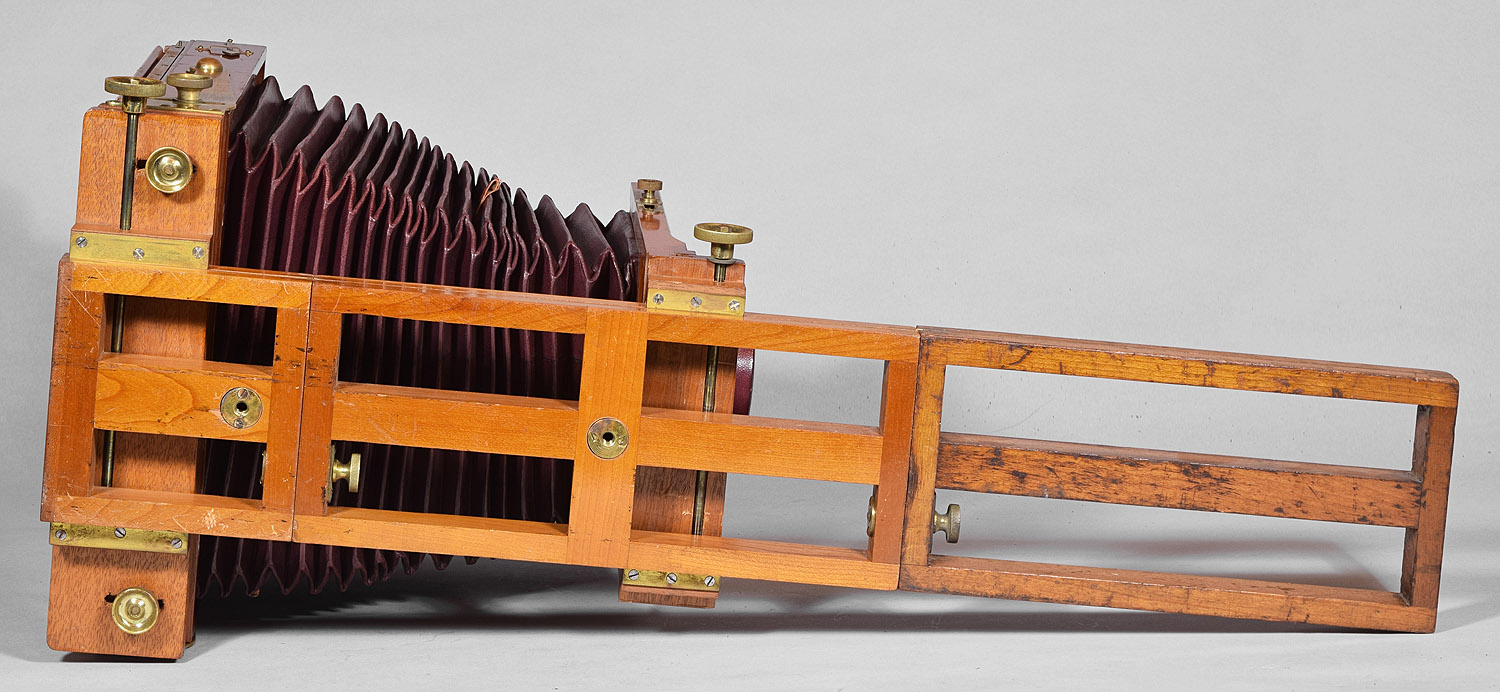
Celluloid label on the top of the ground glass
frame.

Another 6½ x
8½" Example. These bellows are
in better shape than the rest of the camera, a clue to inspect them
closely enough to tell that they are leatherette (a polymer-coated
fabric) and so they are undoubtedly a recent replacement.
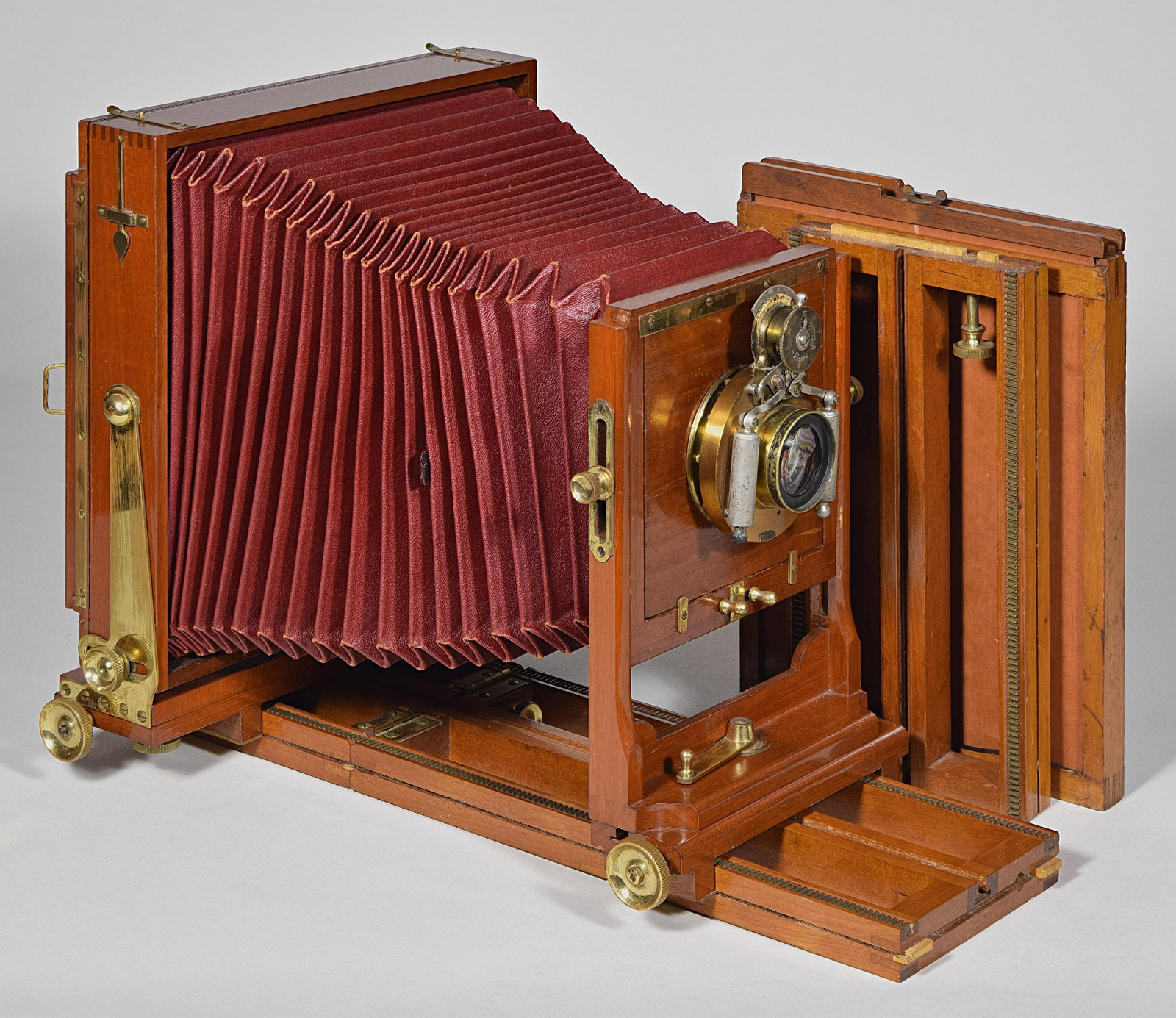

With all swings in use.
Most of the controls are obvious, except for the two levers just under
the lens board on the front standard. Pinching them towards one
another unlocks the front standard tilt, a fact that eluded me for about
ten years - since the levers are pinched at right angles to the tilt,
you need to simultaneously pinch the levers while manually tilting the
standard with the other hand - unlikely if you don't know what the
levers do.
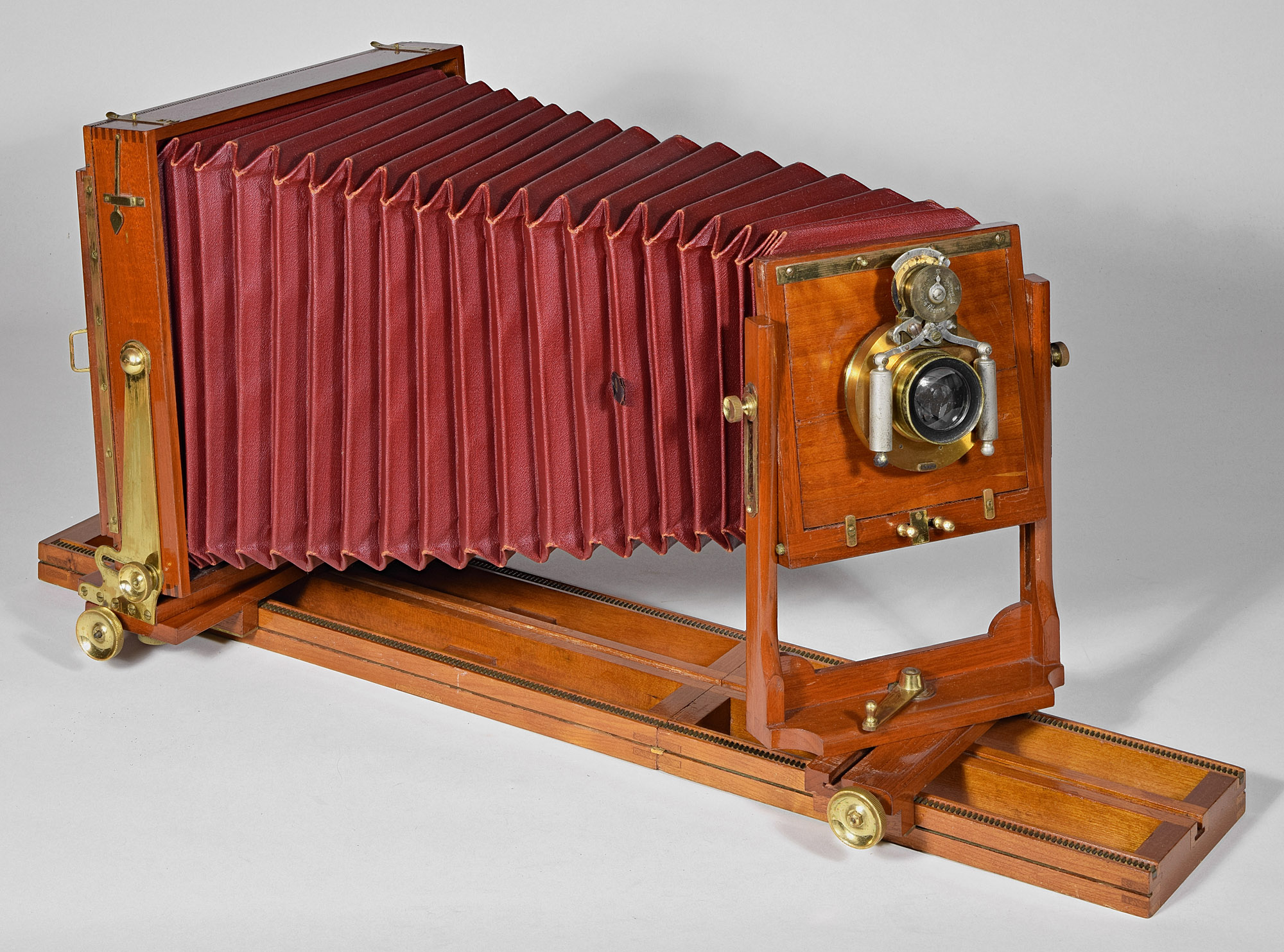
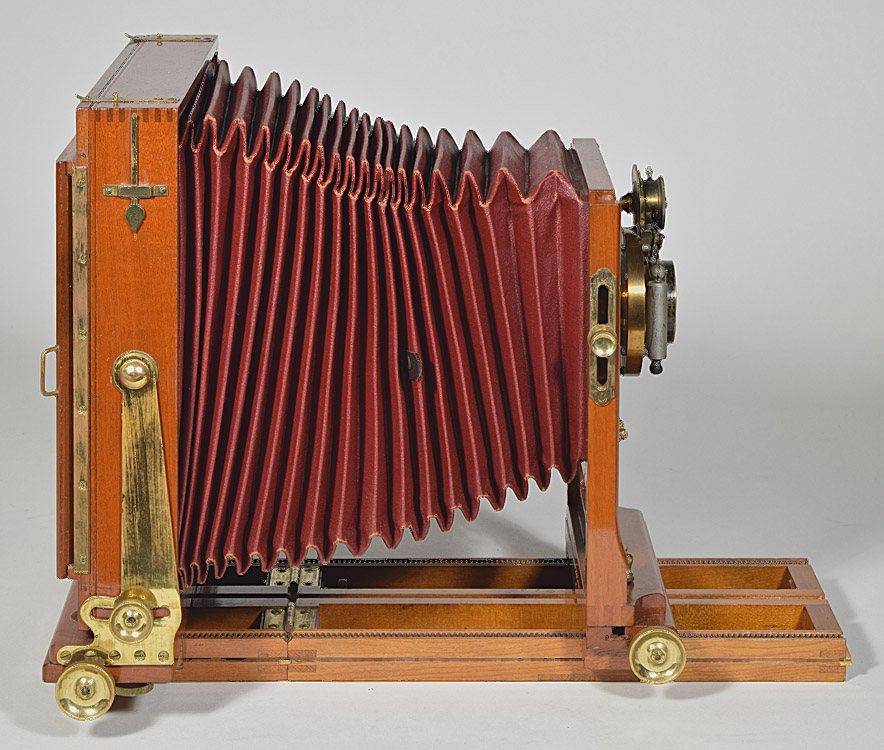
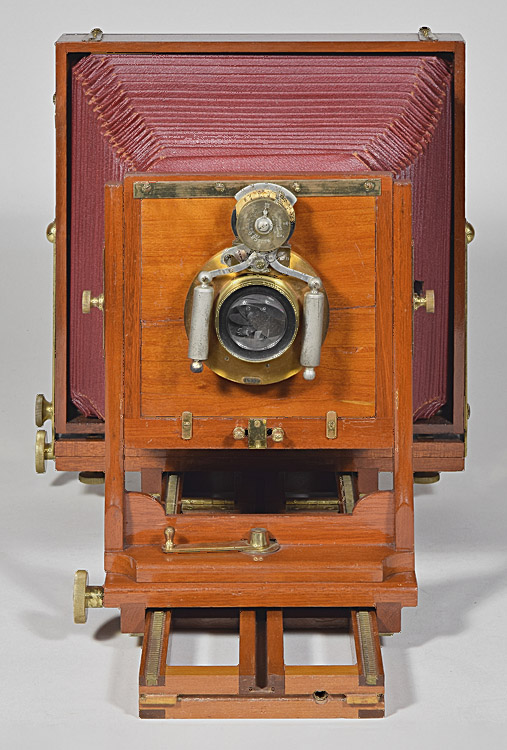
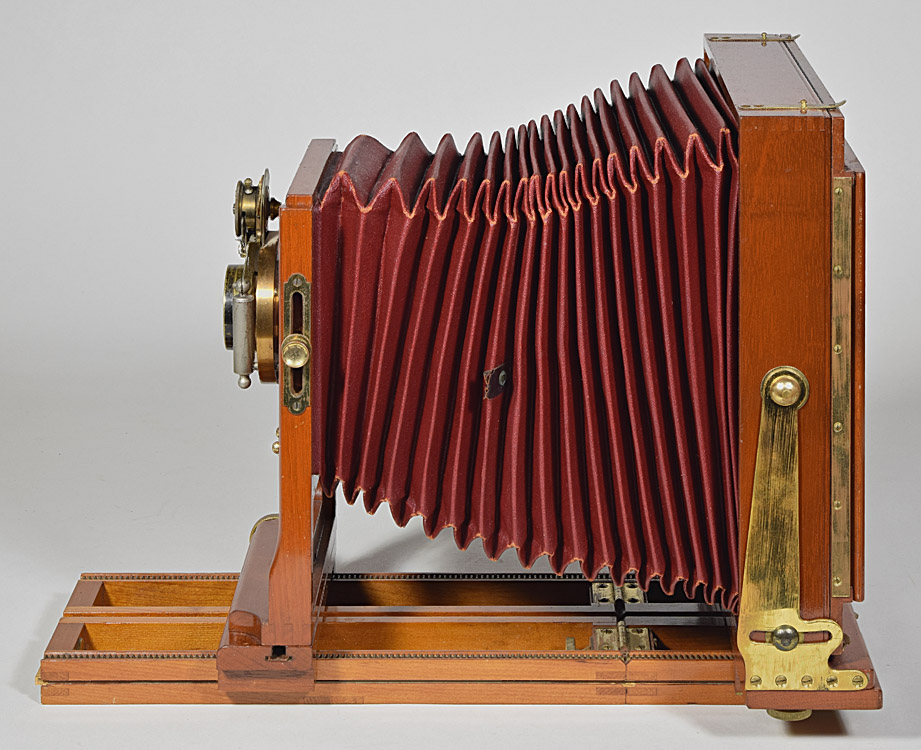
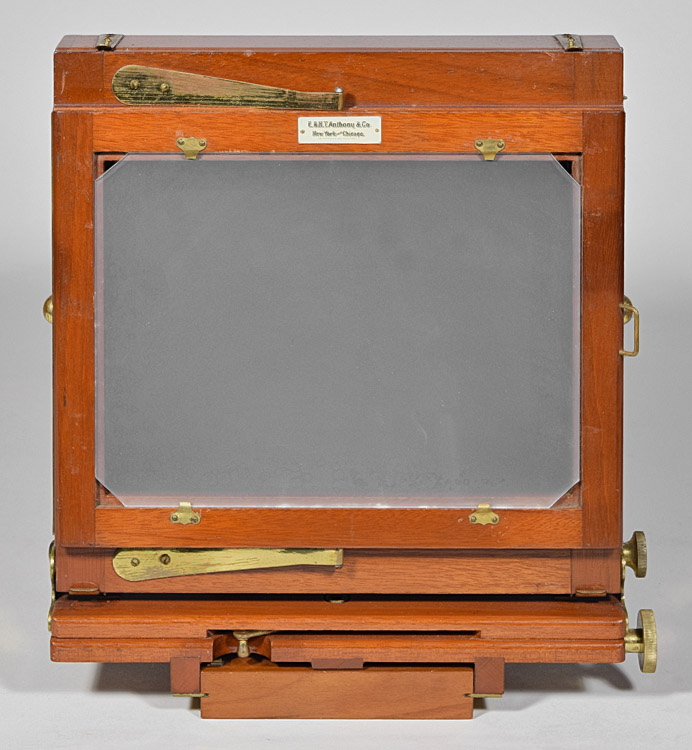
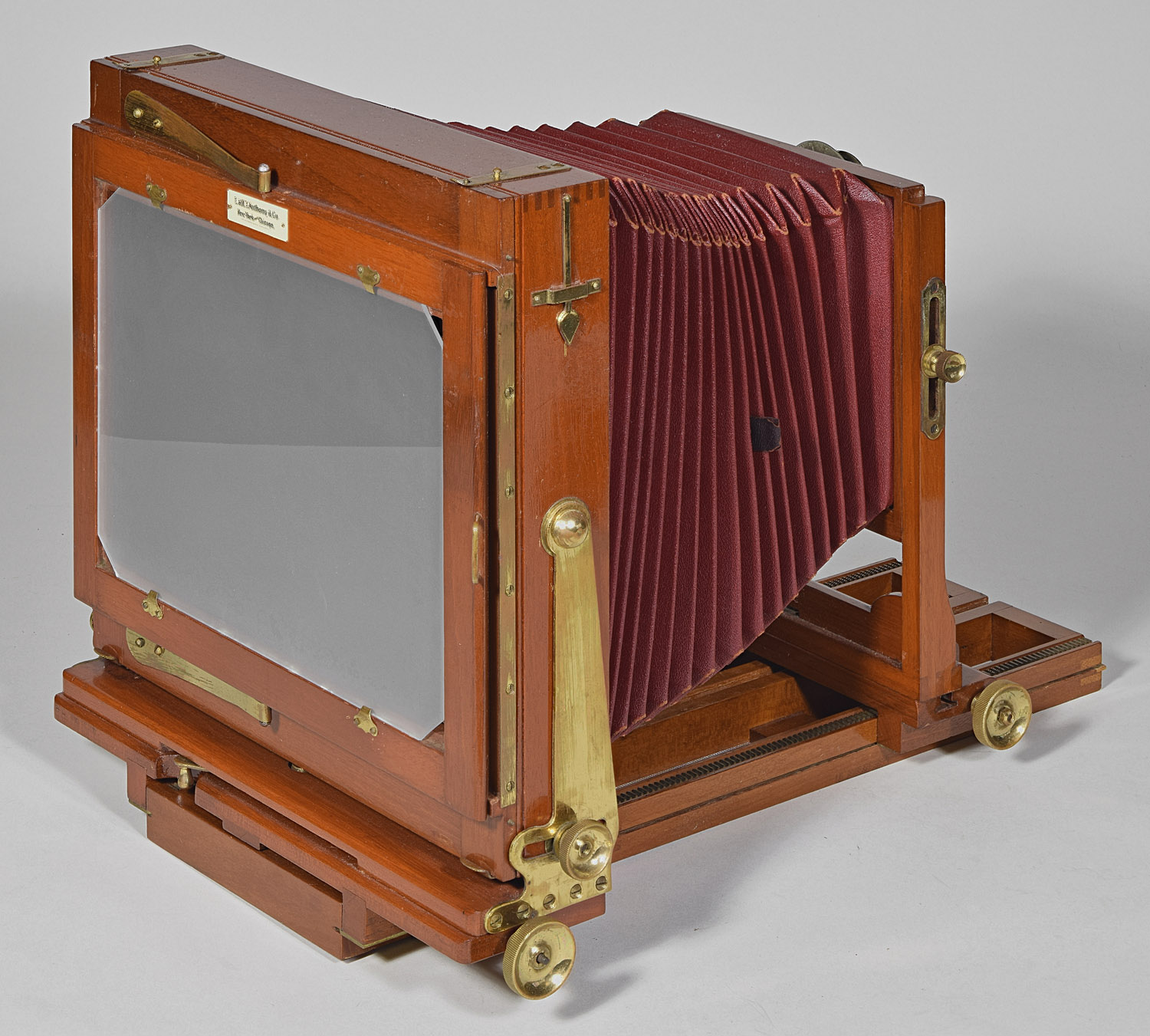
Bottom
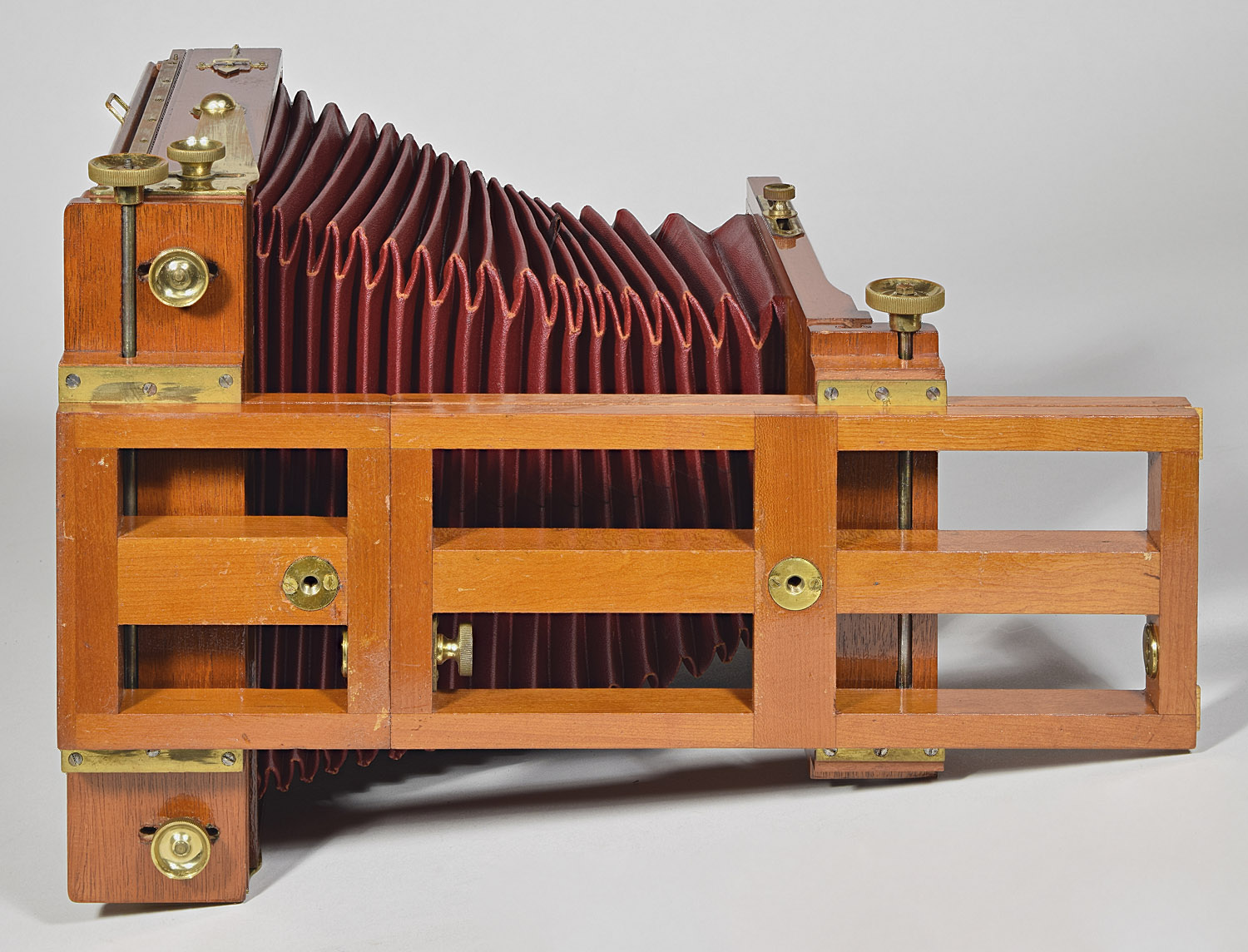
Top
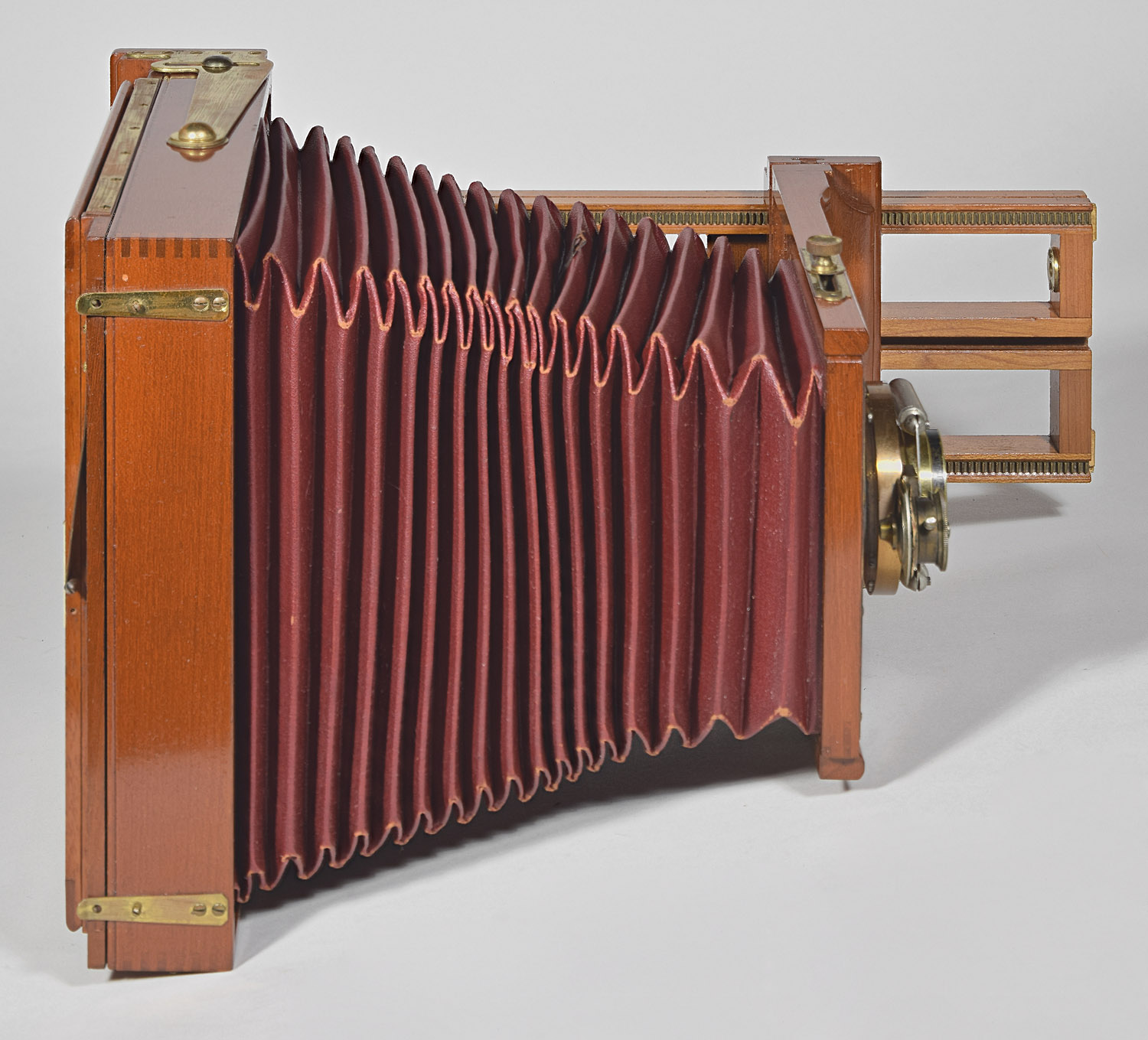
Celluloid label on the top of the ground glass
frame: "E. & H.T. Anthony & Co. / New York and Chicago. / The Whitehead
& Hoag Co., Newark, N.J."

This holder, though
unstamped as usual for Anthony plate holders, is an E. & H.T. Anthony
"Victor", which has a distinctive half-round retainer for the dark
slides, and also unusual dark slides having a grip area that only runs
half the width of the slide. The reason that the plate holder is
unmarked on the outside, is that it has a paper label proclaiming its
name and four patent dates on the inside.
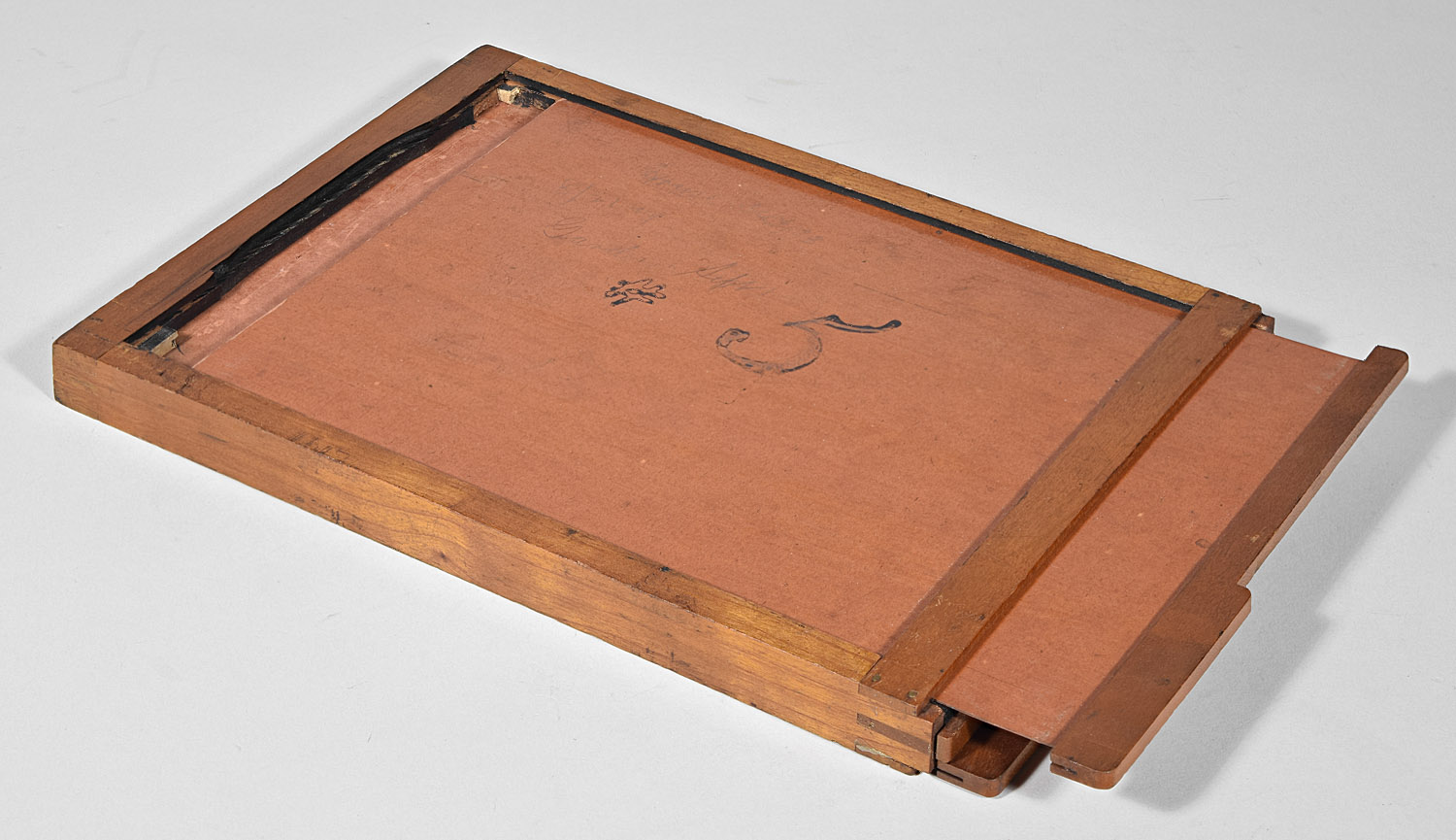
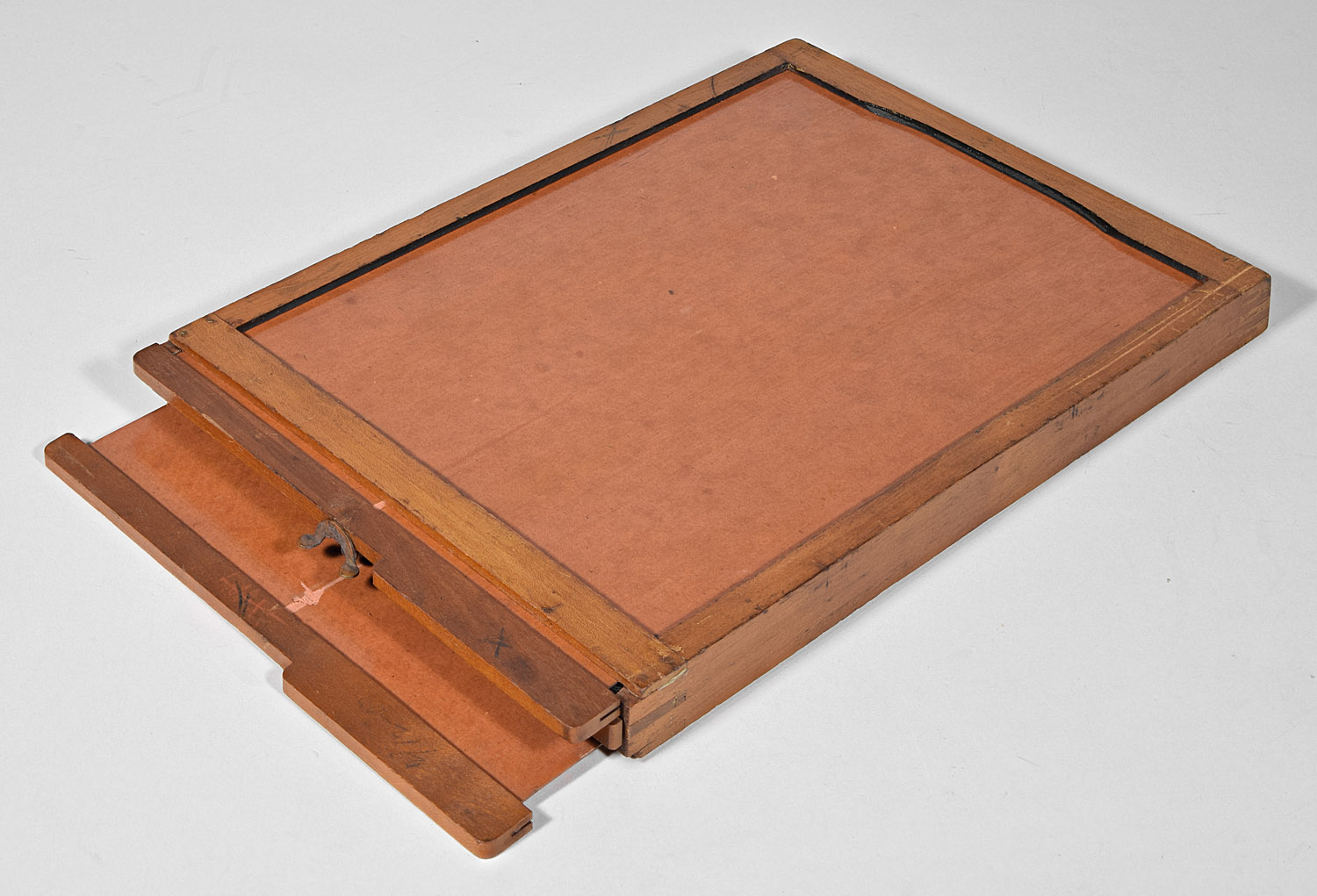
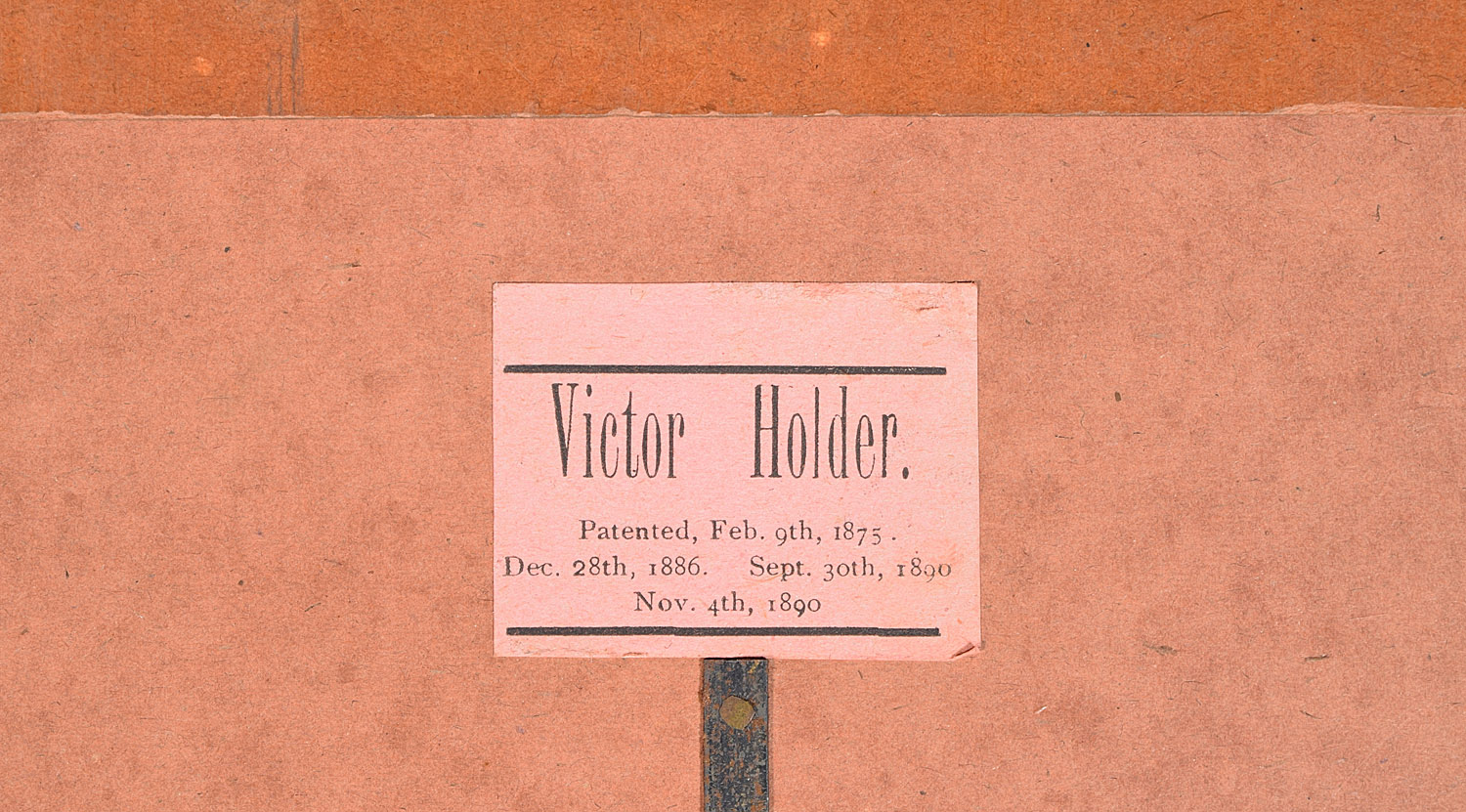
An 11x14" example with its original canvas
case and plate holder.
These maroon bellows are the original leather; their almost pristine
condition matches that of the camera wood and brass.
This camera lacks the usual Anthony label on the upper part of the
ground glass screen.
The lens board is a modern replacement. Also, the front extension
is missing, despite having a handy case in which to reside even when not
used on the camera; who could be so ditsy as to do that?
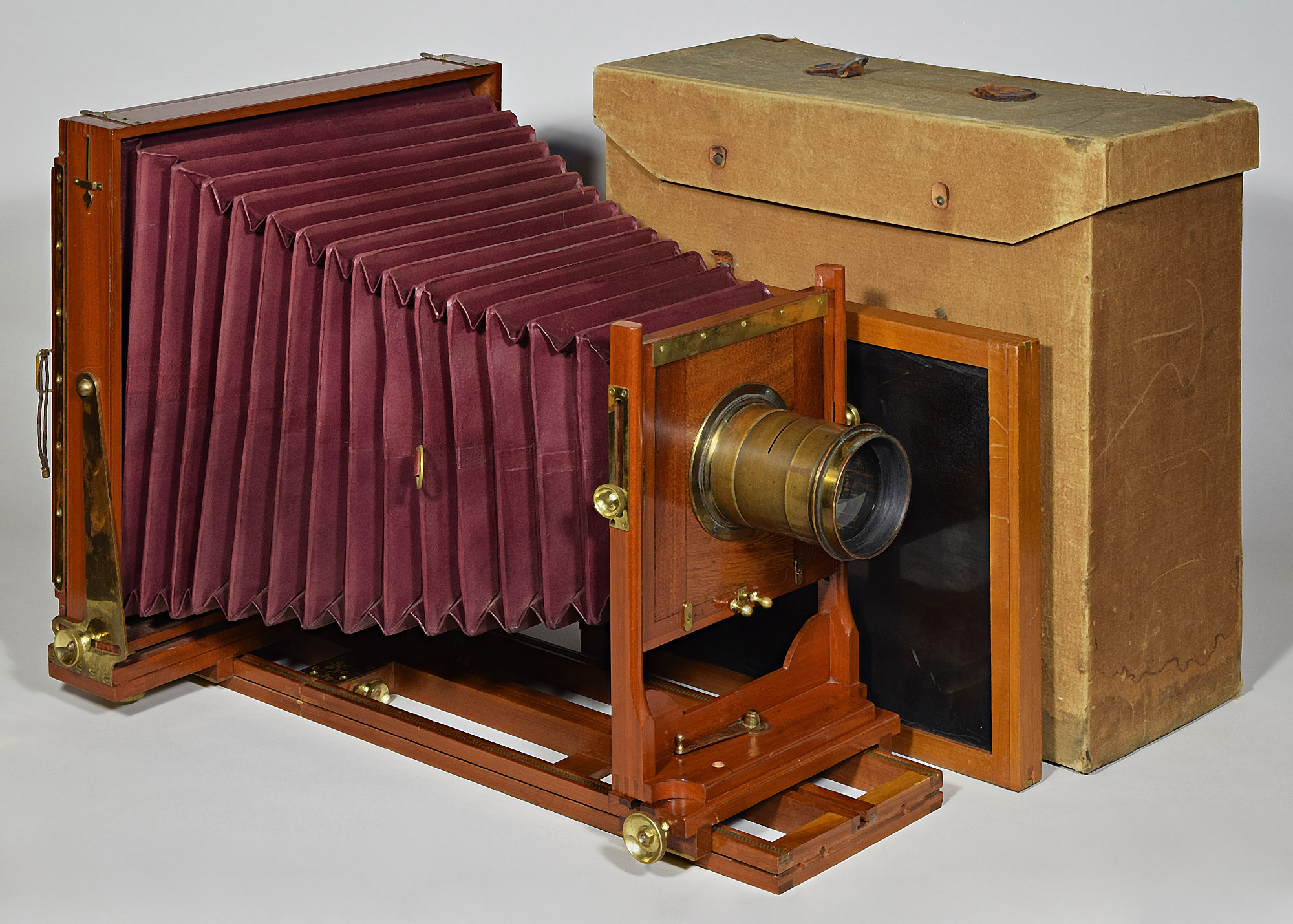
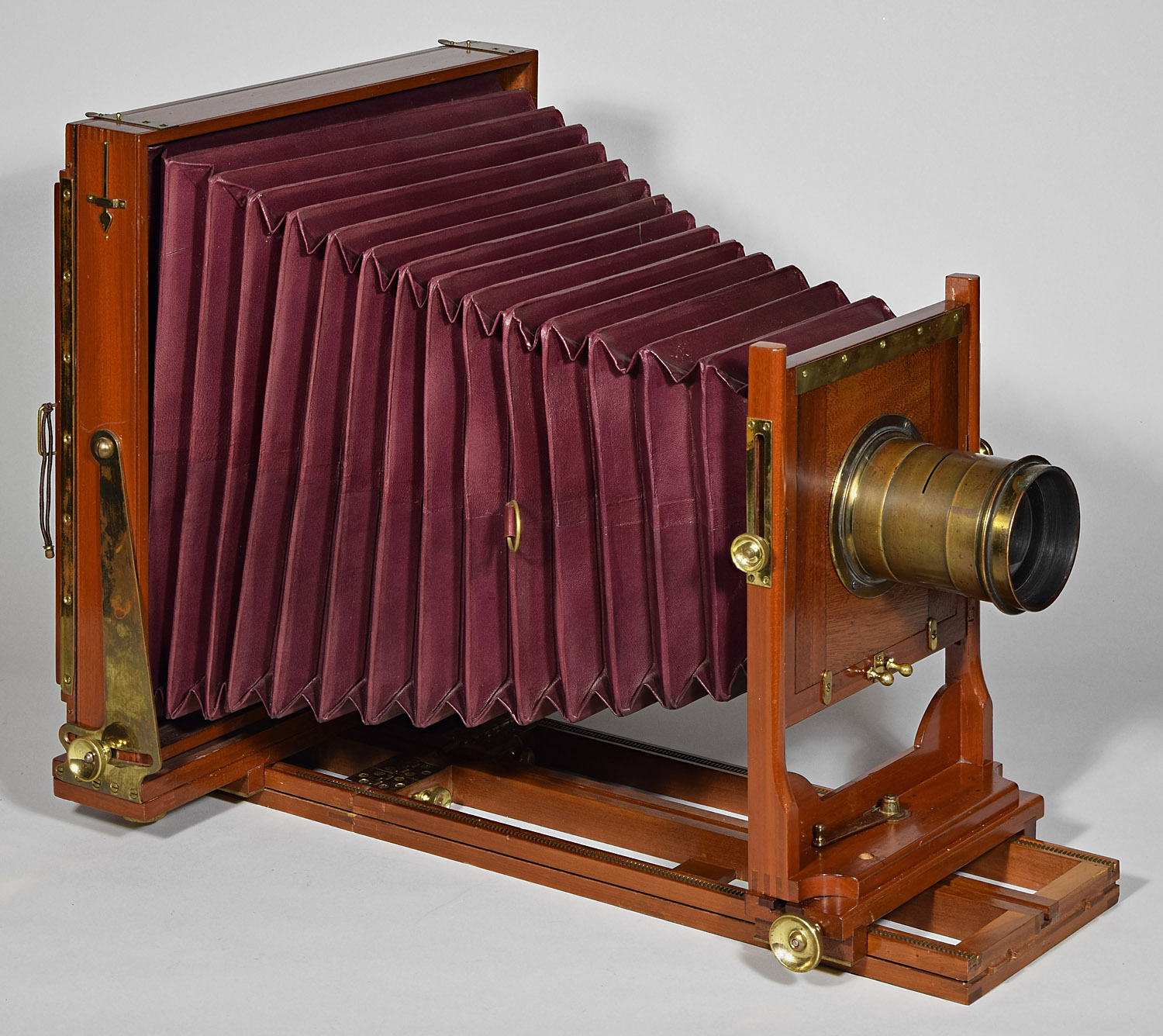
Bellows set up for short
lens with loops installed over the thumbscrews on the front standard.
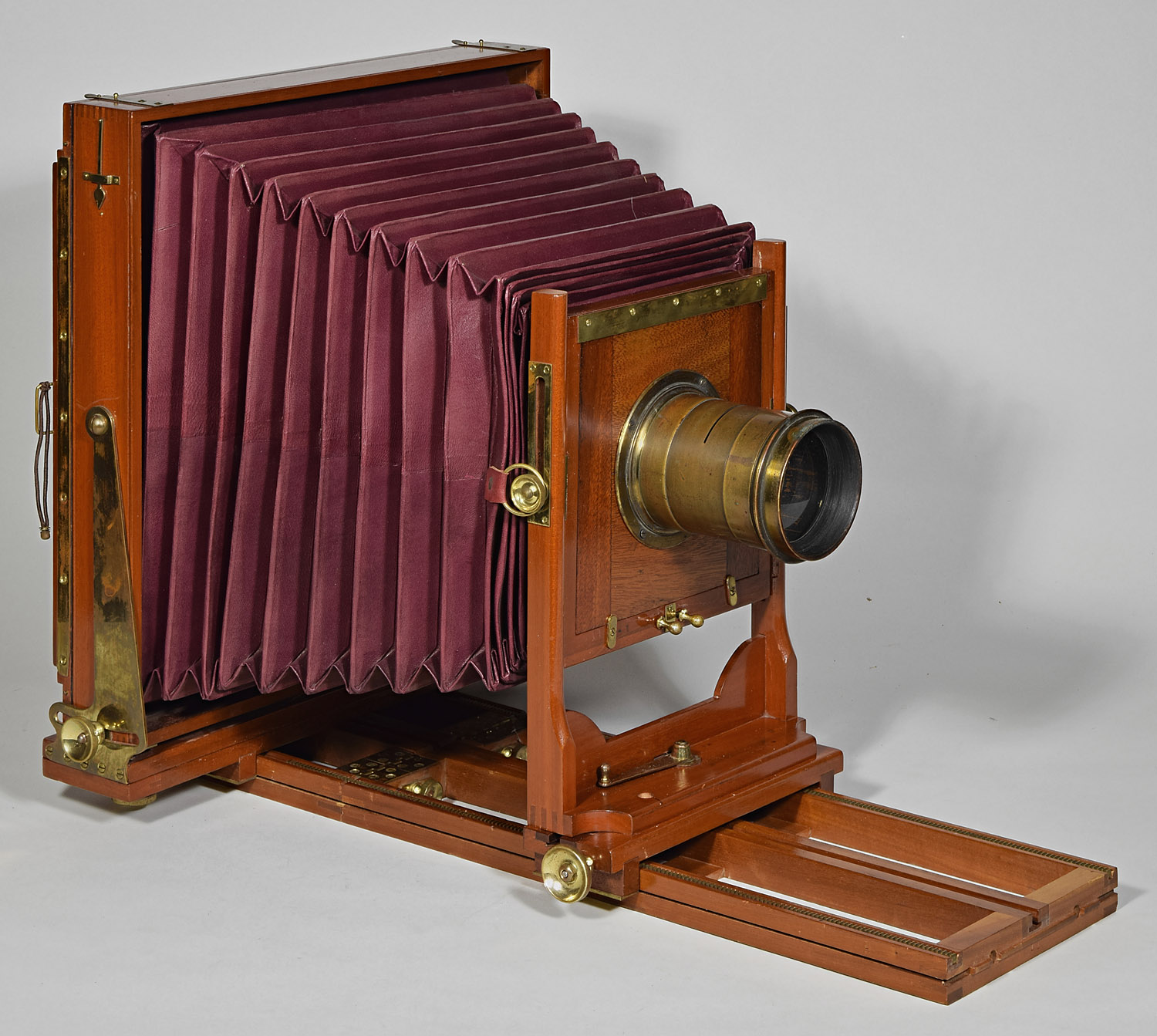
With all swings in use.
Most of the controls are obvious, except for the two levers just under
the lens board on the front standard. Pinching them towards one
another unlocks the front standard tilt, a fact that eluded me for about
ten years - since the levers are pinched at right angles to the tilt,
you need to simultaneously pinch the levers while manually tilting the
standard with the other hand - unlikely if you don't know what the
levers do.

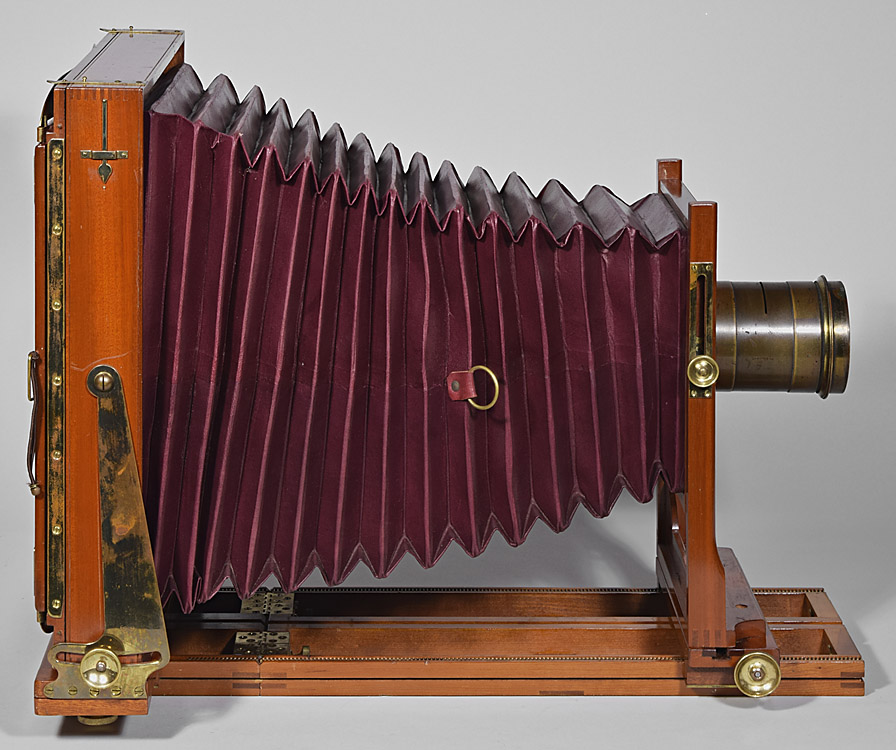
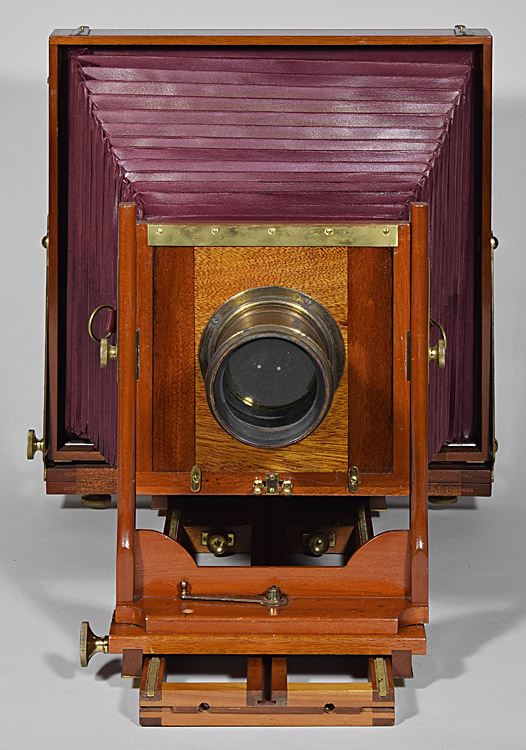
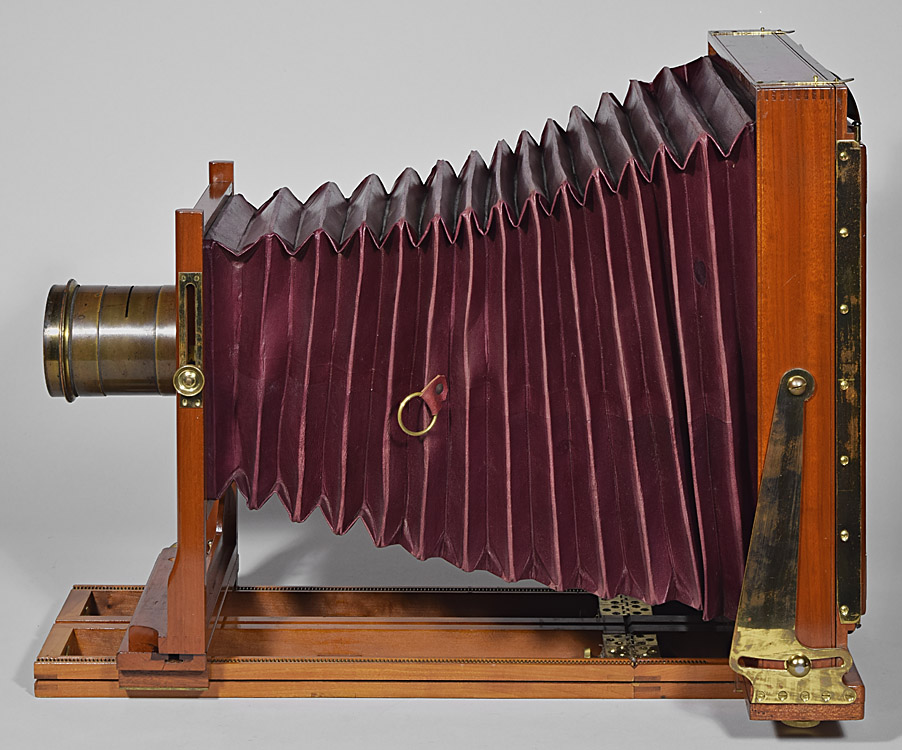
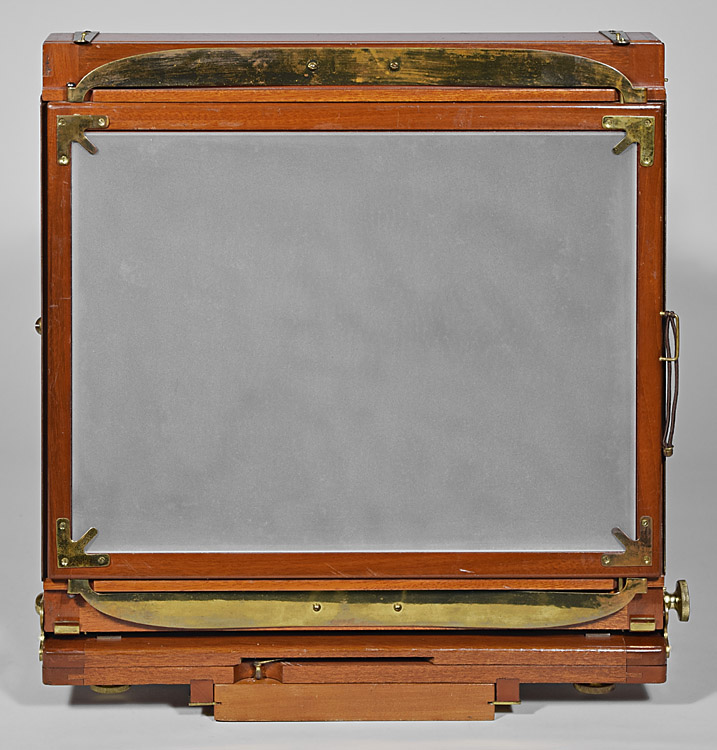
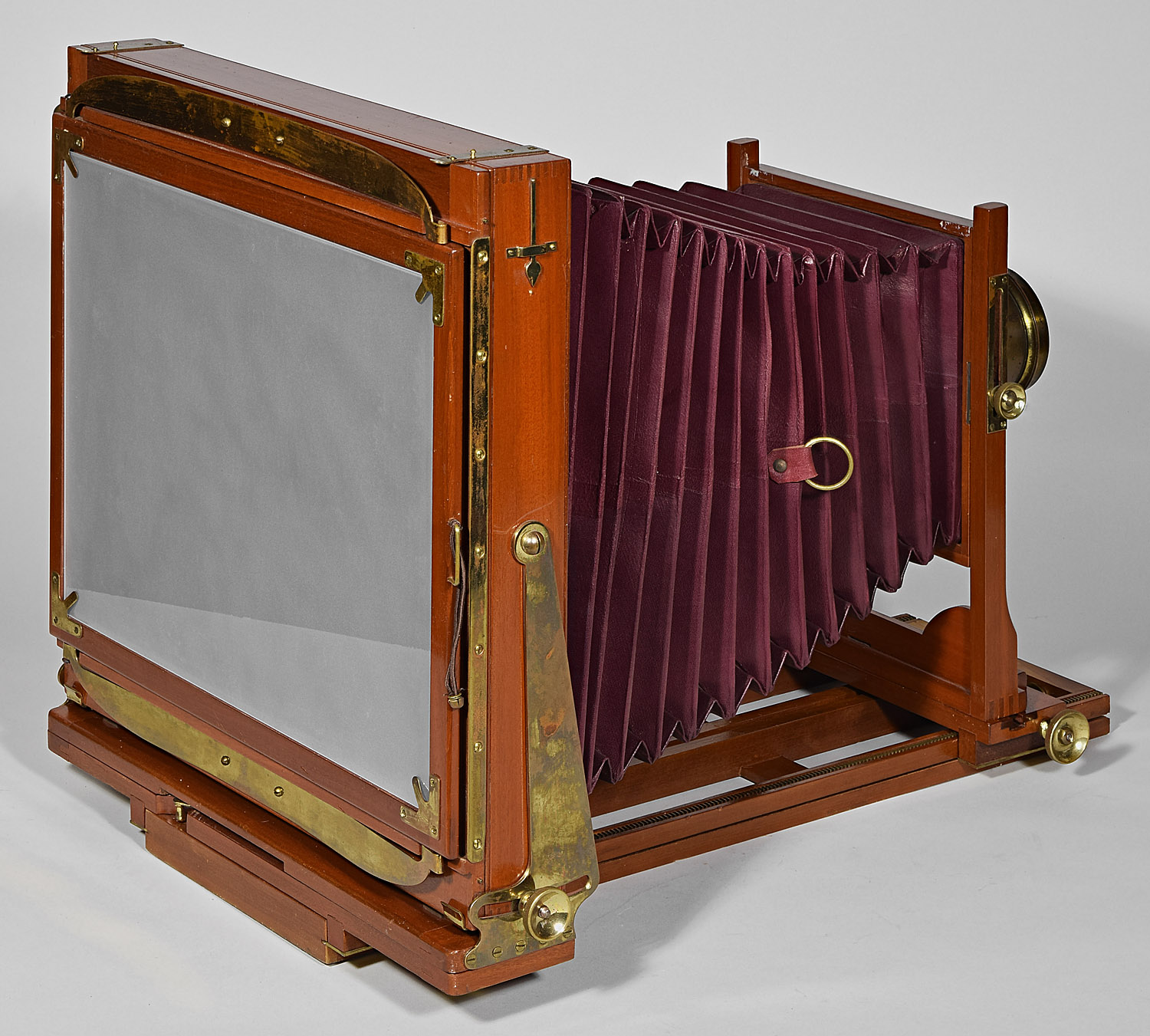
Bottom
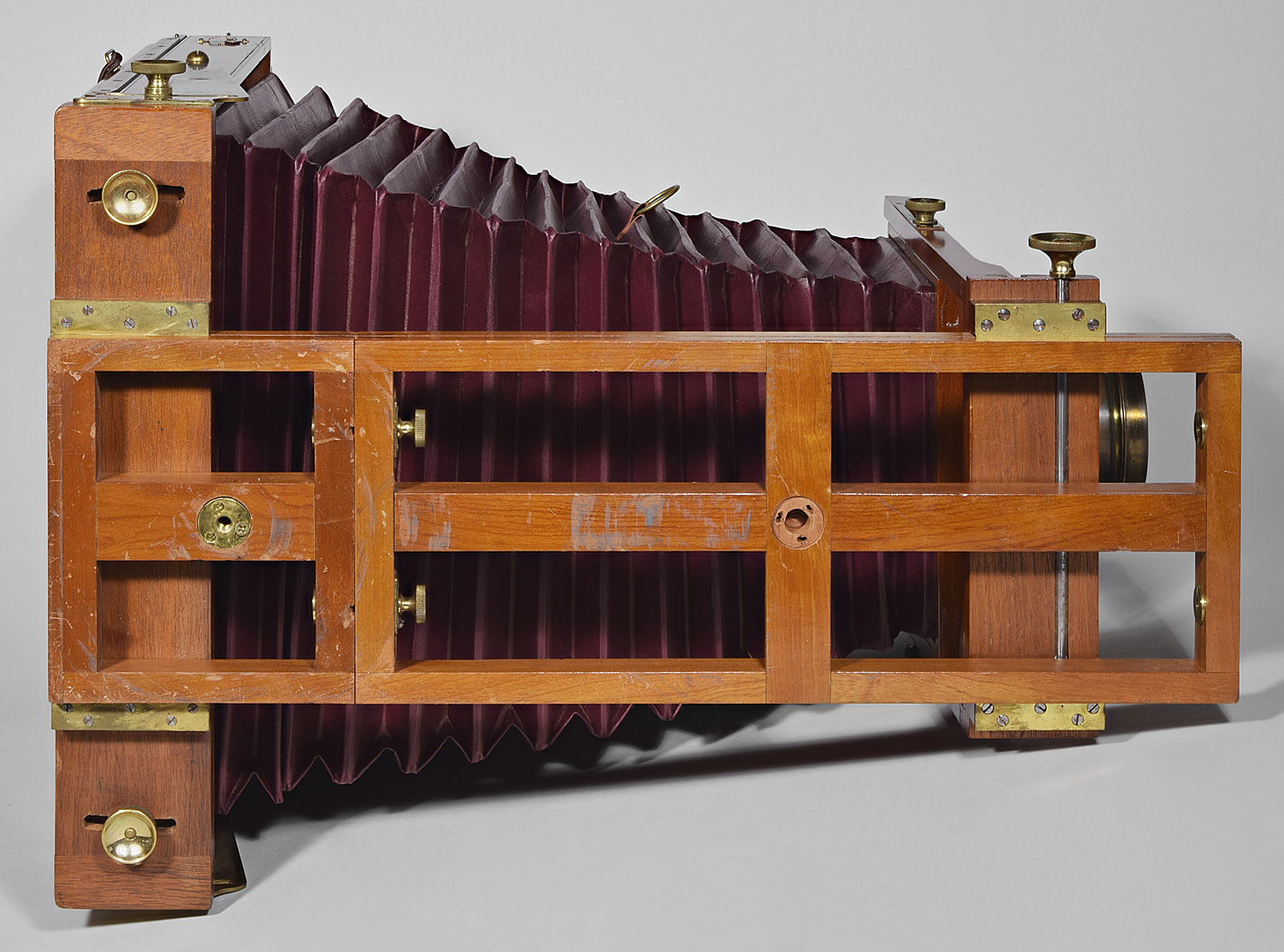
Top
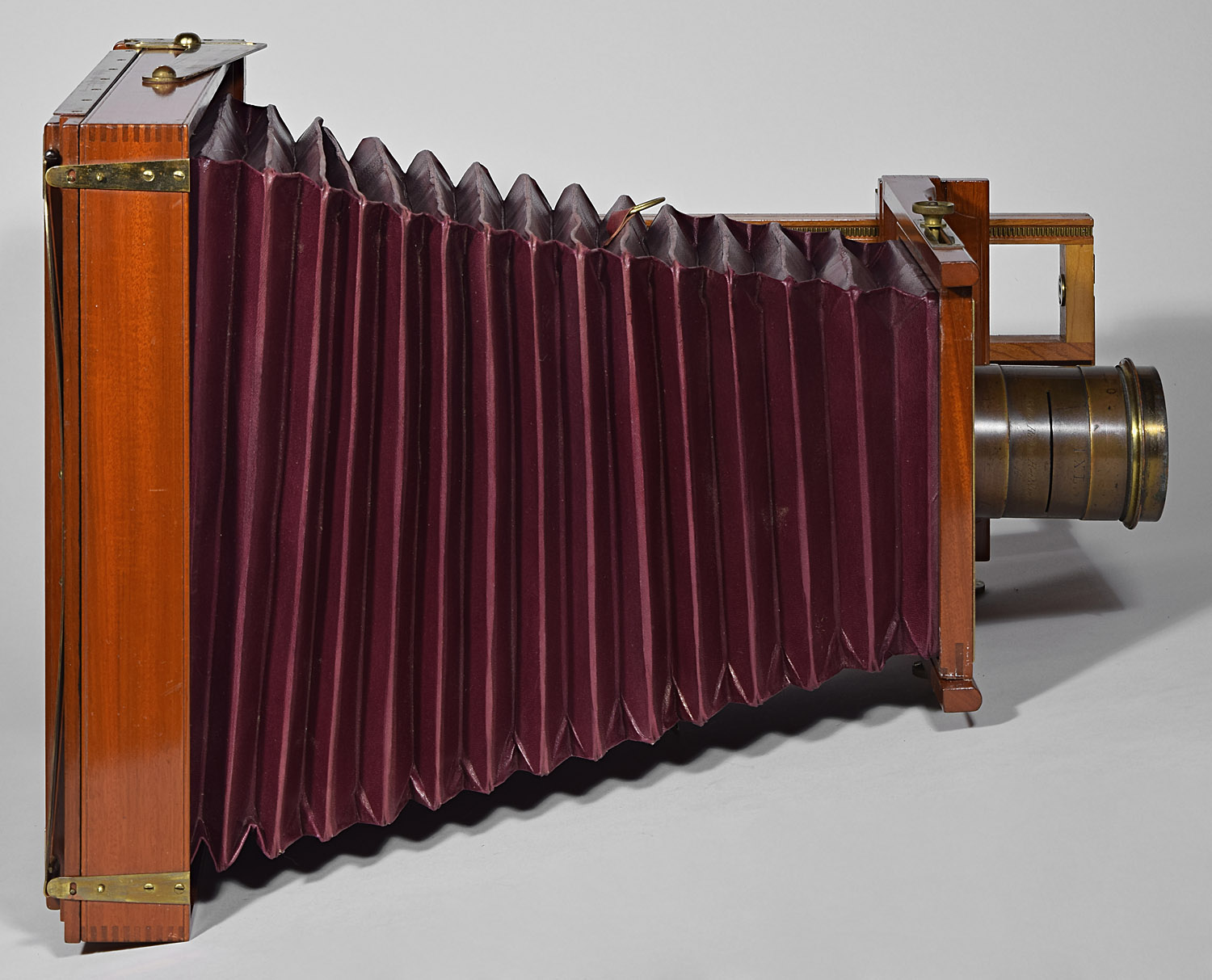
Original E. & H.T. Anthony
"Zephyr" plate holder, still loaded with plates.
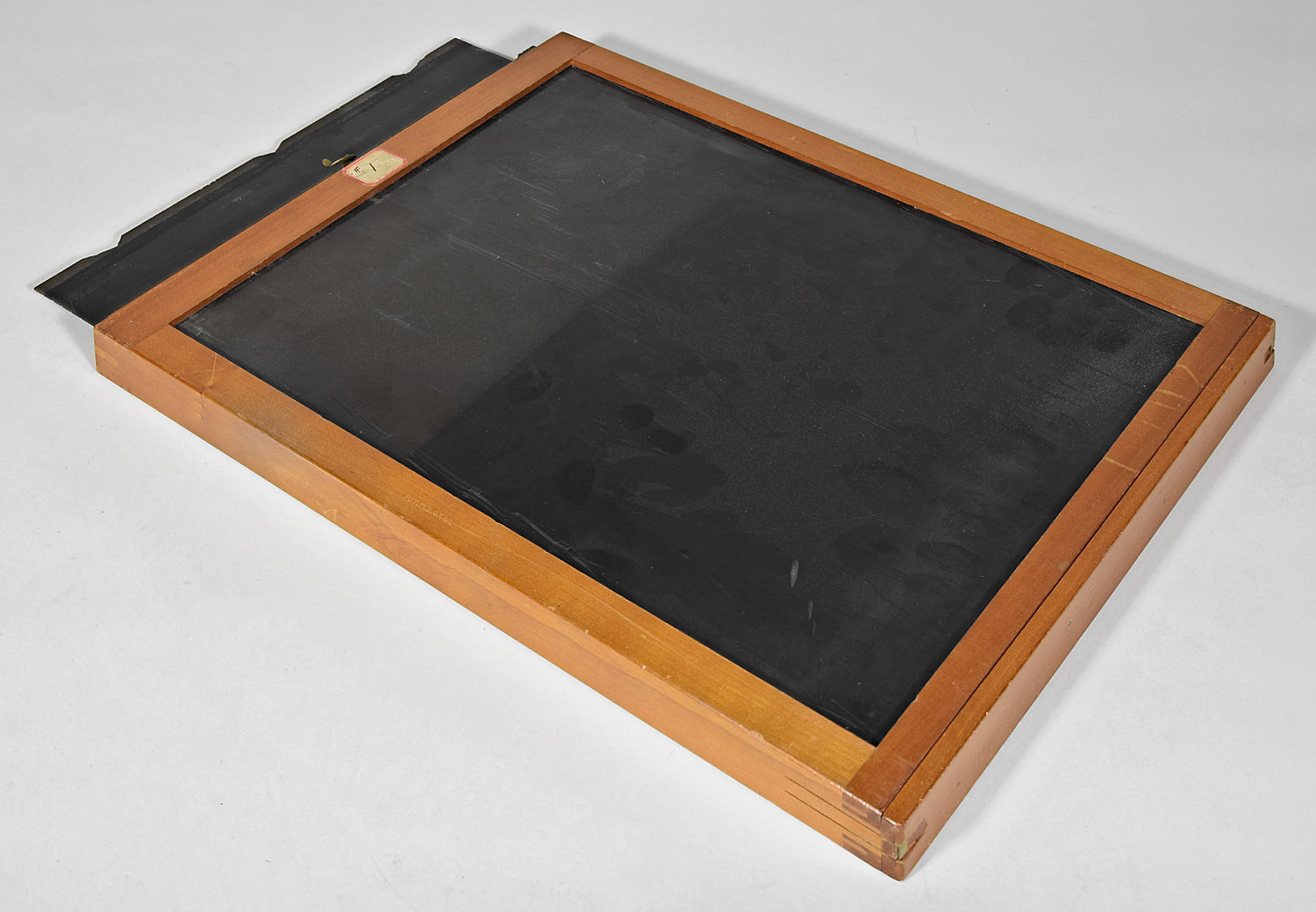
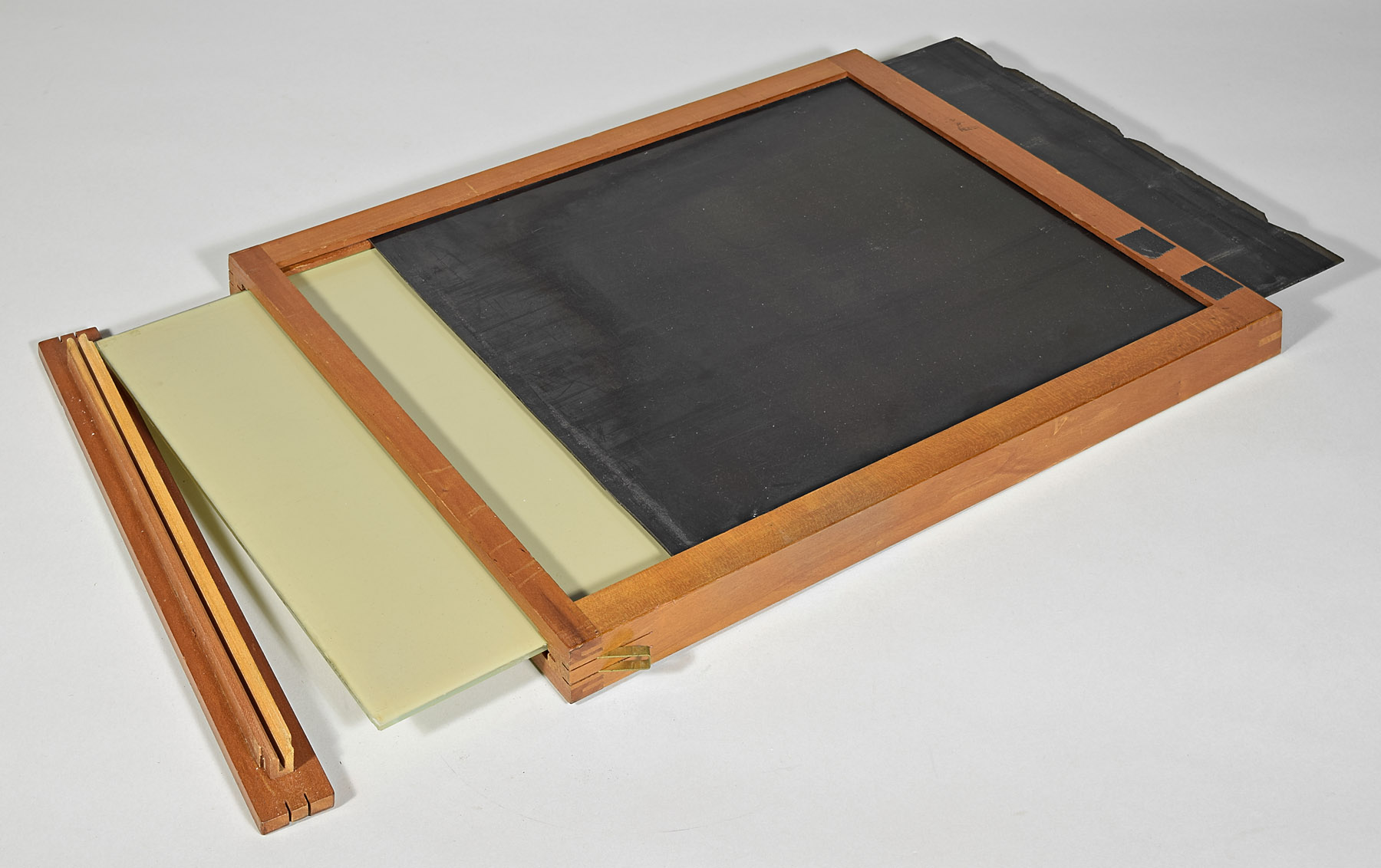
Date Introduced:
- ; Years
Manufactured: c.1901-c.1906 References:
Construction:
front focus via rack and
pinion (two gear tracks on top of base rails)
and
rear
focus via push-pull;
double swing; reverse by removable back; three-piece lens
board
Materials:
mahogany body; cherry base track; black fabric bellows; brass hardware
Sizes Offered:
6½x8½; 8x10
Notes:
You might think that the
Long Focus Clifton
would be a Clifton
with an extra extension to the base, but you would be wrong. This
camera has completely different rear hardware than the shorter
Clifton.
The front is the same, however. A rather specialized, expensive
camera that was made for a relatively short time period, so it may be
expected to be rare.
The International Annual of Anthony's
Photographic Bulletin, Volume XIV for 1902,
edited by W. I. Scandlin, E. & H. T. Anthony & Co. (New York, NY),
copyright 1901, p. 76
Descriptive Catalogue and Price List of
Photographic Apparatus, Anthony &
Scovill Co. (New York, NY),
1903, p. 59
Photographic Goods 1842-1904, The Anthony and Scovill
Co., (New York, NY), 1904, Catalog C, p.11
Photographic Catalogue, The Anthony and Scovill Co., (Binghamton,
NY), 1906, pp.49-50
